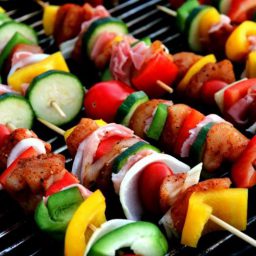 You’ve probably heard of gluten-free, keto, and paleo diets, but do you know how they differ from each other or what they mean exactly? With dozens of specialty diets targeting all kinds of health and fitness goals, it can be difficult to know what your body needs. Not only that, but with diets being constantly modified, it’s easy for the variations to drift further away from the original science, causing all kinds of confusion.
You’ve probably heard of gluten-free, keto, and paleo diets, but do you know how they differ from each other or what they mean exactly? With dozens of specialty diets targeting all kinds of health and fitness goals, it can be difficult to know what your body needs. Not only that, but with diets being constantly modified, it’s easy for the variations to drift further away from the original science, causing all kinds of confusion.
When trying to decide if a restrictive diet is right for you, be sure your goals are identified from the start, whether it be for cognitive enhancement, athletic performance, improving quality of sleep and energy, weight loss, or any other reason. While carbohydrates are a controversial theme with each of these diets, they are a critical component to a healthy mind and body. As with any diet plan, it is important to remember that nutrition is not one-size-fits-all, and the most successful diet plans are those that are individualized.
That being said, check out the simplified explanations of these three diets below, and don’t hesitate to come into a Peoples Rx to let us help identify what path might be best for your lifestyle and health.
Gluten-Free
Many people struggle with non-celiac gluten sensitivity or are gluten intolerant, and turn to a gluten-free diet to reduce inflammation.
If you suspect gluten is a culprit in your inflammation or GI distress, a surefire way to determine if you’ve got an allergy is through an elimination diet. When you eliminate gluten and your symptoms either subside or become worse after reintroducing foods containing gluten, the connection becomes clear. Symptoms of gluten intolerance include bloating, gas, low energy, cramps, constipation, fatigue, and diarrhea.
Grains to eliminate on a gluten-free diet are wheat, rye, barely, and triticale. Oats are naturally gluten-free, but can be contaminated in processing or in bulk bins, so it might be best for those with celiac to avoid them altogether. Here’s a great resource on gluten-free whole grains.
Other foods to be skeptical of include sauces, marinades, and pre-marinated meats, which often contain soy sauce or wheat derivatives. Gluten also sometimes hides on ingredient lists in the form of modified food starch or malt flavoring. It’s also important to check your supplements and medications for a gluten-free stamp, as they often include excipients, or inactive ingredients, that aren’t always gluten-free friendly.
Still have gluten questions? Here’s a helpful upcoming event that will focus on gluten-free and dairy-free diets.
Ketogenic Diet
Our friend The Good Food Fighter has a great explanation of how the keto diet works. To put it simply, you eat very few carbohydrates and instead consume high amounts of fat, raising your ketone levels and putting your body into a metabolic state known as ketosis. When you avoid starches, your body burns fat for fuel instead. In addition to carbs, added sugars are also avoided on this diet.
A good probiotic is important when following a keto diet. Specifically, probiotics that include prebiotics are great for the keto diet. Prebiotics (AKA fiber) exclusively feed the gut, and a keto diet eliminates most sources of fiber.
MCT oil (medium chain triglycerides) is a great route to reach ketosis. Consuming MCT oil in the morning after an overnight fast, which is independently ketogenic, boosts the production of ketones. Butter contains MCT, which is why butter coffee is a common breakfast item for those on the keto diet.
Check out this local event on fats for more information.
Paleolithic Diet
The paleo diet generally means a plate comprised heavily of protein, moderate in fats, low in carbohydrates, and free of dairy and legumes. It emphasizes foods which can be hunted, fished, or gathered, meaning grass-fed meats, eggs, and seafoods are the optimal sources for protein.
Those on the paleo diet typically avoid grains and added sugars. Even sugar derived from a coconut has the same effect on blood sugar as refined white sugar derived from sugarcane. Carb intake from non-starchy vegetables is encouraged (similar to keto), however there is no set amount of carbs, protein, or fat that must be consumed in order to follow a paleo diet successfully (unlike keto). Nuts and seeds are full of healthy fats and make great paleo snacks.
To learn more about the differences between paleo and keto diets, check out this event!
At Peoples, our wellness coaches, including doctors of naturopathy and certified clinical nutritionists, stand ready to assist you in achieving your health goals as they relate to diet and lifestyle. If you haven’t yet, be sure to check out the grocery section in your favorite Peoples store, as well as Peoples Deli (located in the North Lamar, South Lamar, and Westlake Peoples Rx locations). We’ve got lots of options for gluten-free, paleo, and keto diets–including snacks, full meals, beverages, and even treats! Happy eating!
If you have comments and/or questions about this blog, email us at blog@peoplesrx.com.
